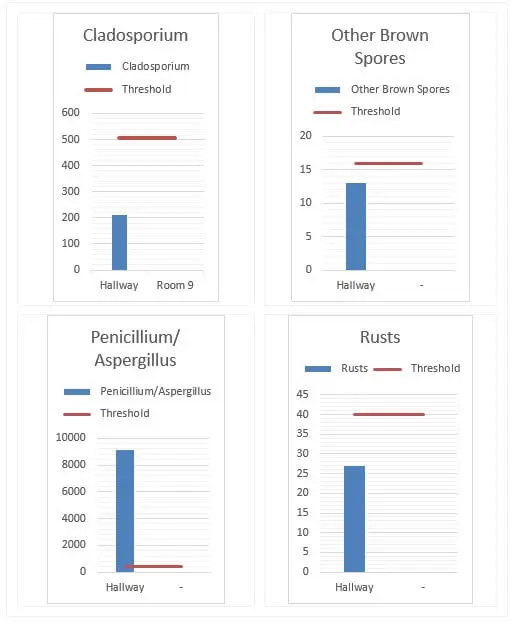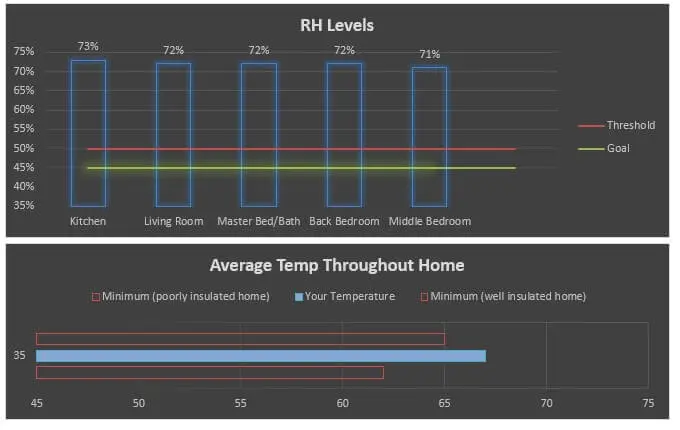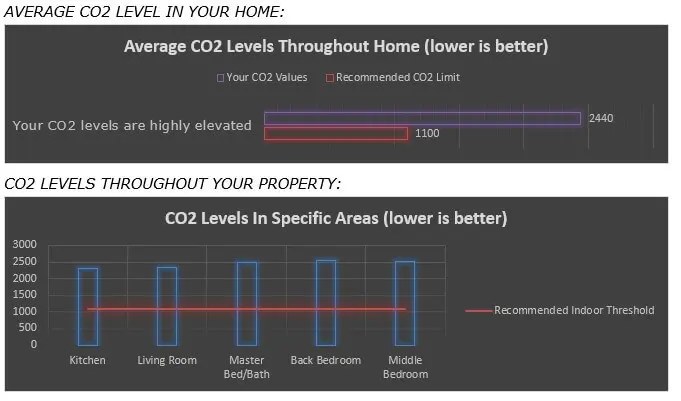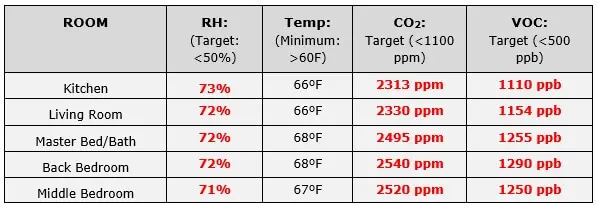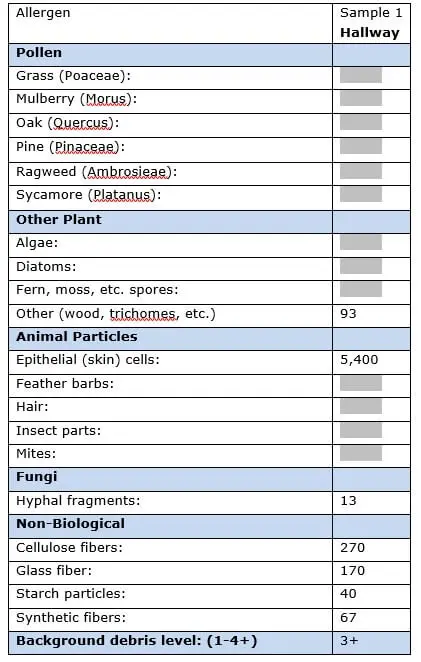Mold Inspection Reports from Mount Vernon
Below are recent mold inspection projects we’ve completed in the Mount Vernon area. These reports can help provide you with an idea of the issues we typically encounter in your region.
Project Type > Construction Inspection for Mold & Water Damage in Mount Vernon
PROJECT SUMMARY
REASON FOR INSPECTION:
- Client is getting ready to resume construction of an event hall. Building has been open for over a year now and client is concerned about the damage that may be present. Client requested an inspection of the structure for information on what pieces need replacing.
PROPERTY DESCRIPTION:
- Property is a barn in the midst of construction. Building began in 2012.
JOBSITE PHOTOS
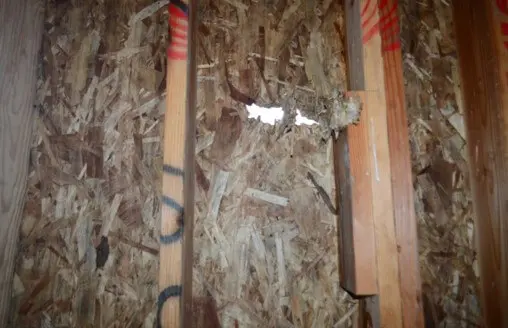
Physical Damage to Some OSB Wall Sheathing
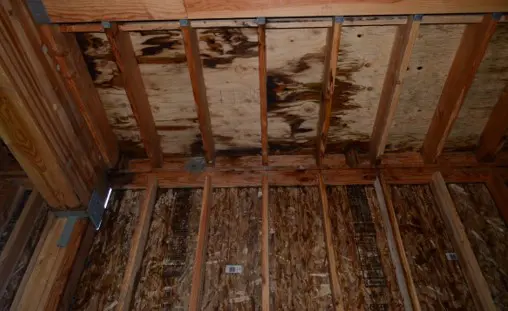
Water Staining Noted on Under Side of 2nd Level Subfloor
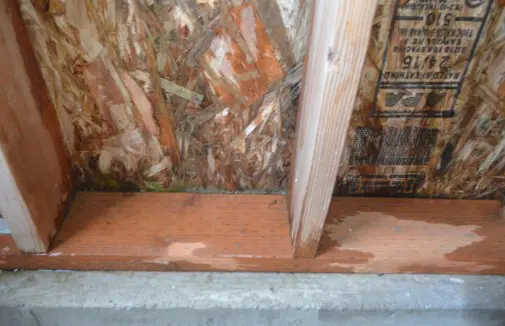
Beginnings Of Rot Noted In Isolated Places of OSB Wall Sheathing
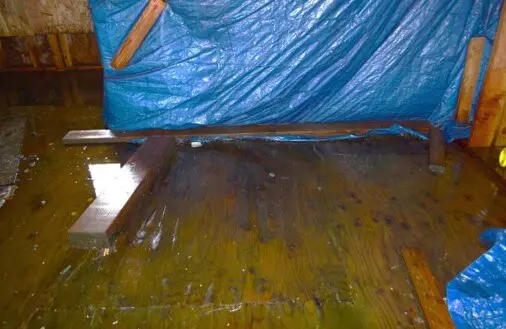
Warping Plywood Floors In Places
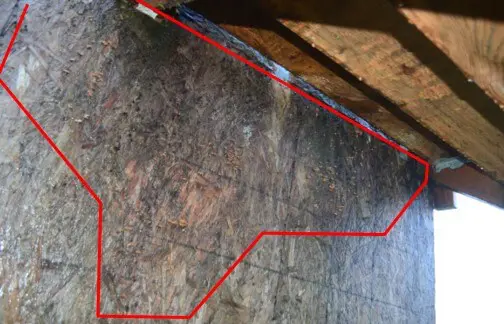
Mushrooms Noted Under Stairway
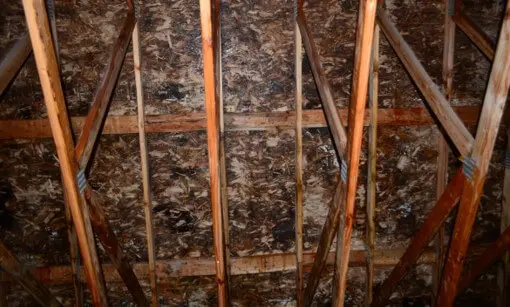
Roof Sheathing Is Damaged By Moisture & Should Be Replaced
OBSERVATIONS
LOCATION: First Floor
Observations:
- Bottom floor: 32 x 60 x 13’ ceiling.
- Most OSB wall sheathing appears to be in acceptable condition.
- Several places of water staining were noted on the interior surfaces of the OSB.
- Some physical rot damage was observed along the top edges of the OSB sheathing, around the edges of each panel where some soft spots were noted.
- Bird nesting material was noted at the tops of the walls in several places.
- The underside of plywood flooring (under the 2nd floor) appeared to be wet, but in acceptable condition.
- All beams and joists were found to be in acceptable condition, with no significant mold or water damage.
- A couple of small areas were noted where physical damage was done to the OSB wall sheathing.
Recommendations:
- Remove all bird nesting material from the walls & joists. Clean underlying areas with soap and water or a pressure washer.
- All soft or water damaged sections of OSB wall sheathing should be cut out and replaced.
- It is recommended that all interior surfaces be pressure washed and dried prior to any finish work beginning.
LOCATION: Second Floor
Observations:
- Top floor: 27 x 60 x 13’ vaulted ceiling with a 20’ peak.• Standing water found on the floor throughout the 2nd floor.
- Several places of water staining were noted on the interior surfaces of the OSB.
- Some physical rot damage was observed along the top edges of the OSB sheathing, (especially at the top of the stairway) and around the edges of each panel where some soft spots were noted.
- Significant amounts of visible mold observed on sheathing for roof.
- Significant rot is present throughout the roof sheathing as well.
- Isolated pieces of plywood subflooring are starting to delaminate. This is due to the wood being exposed to standing water for significant amounts of time.
- The wall studs, ceiling joists and roof trusses are in acceptable condition, with no significant mold or observed physical damage.
Recommendations:
- All OSB roof sheathing should be removed and replaced due to excessive damage from rot and moisture.
- Delaminated portions of plywood subflooring should be pulled out and replaced.
- All soft or water damaged sections of OSB wall sheathing should be cut out and replaced.
- Ensure the roof is properly vented with an externally baffled ridge vent to provide adequate exhaust ventilation to the attic space.
Project Type > Mold Inspection for a House in Mount Vernon
PROJECT SUMMARY
REASON FOR INSPECTION:
- Client recently found mold on a bedroom wall and requested a mold inspection. Client also had concerns over indoor air quality since they have not been feeling well lately.
PROPERTY DESCRIPTION:
- This single family residential property was built in 1961 and is 1,999 ft².
CAUSE OF MOLD:
- Elevated relative humidity levels inside the home lead to condensation and mold growth on cool surfaces.
LABORATORY RESULTS
ANALYSIS OF YOUR RESULTS:
- Extreme Amplification: Mold spores were detected at levels many times greater than the threshold, indicating a site of high mold amplification and growth. Please refer to the attached report for more detailed information.
The most likely contributor of the elevated mold spores is:
- Elevated humidity.
- Prior water intrusion.
Recommendations:
- Due to the extremely high level of mold spores in your home, immediate action is necessary.
- Due to the elevated levels of mold spores, the operation of a commercial HEPA air scrubber is highly recommended. This will rapidly lower the indoor mold spore levels. Please contact Environix for pricing.
JOBSITE PHOTOS
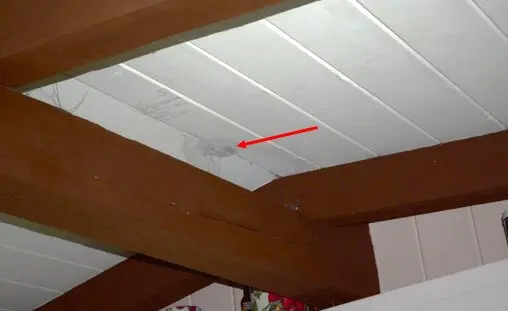
Water Stains on Kitchen Ceiling – Condensation Related
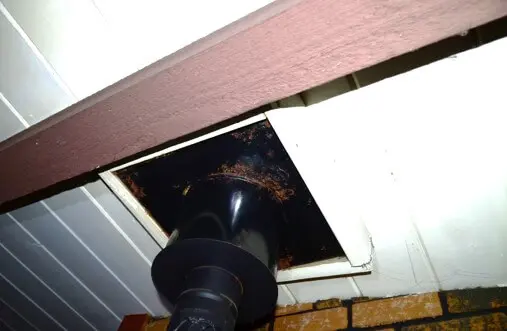
Corrosion on Stove Pipe – Condensation Related
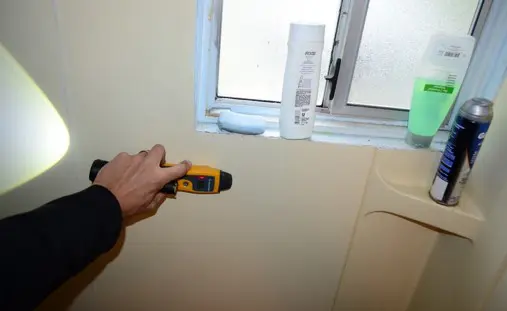
Elevated Moisture Under Window – Failed Sealant
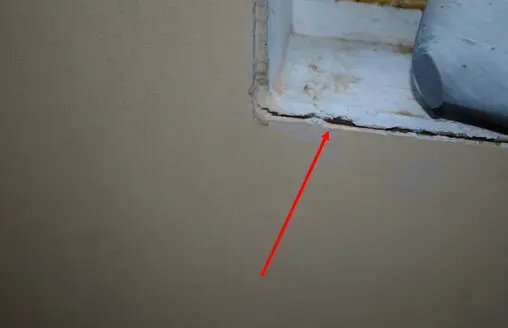
Detail of Failed Sealant
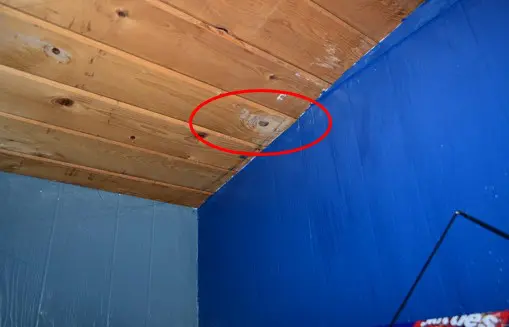
Mold Growth on Ceiling of Middle Bedroom
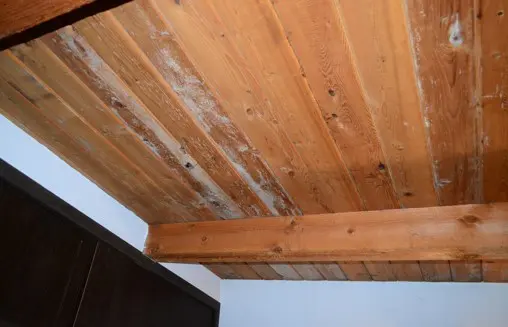
Moderate to Heavy Mold on Master Bedroom Ceiling
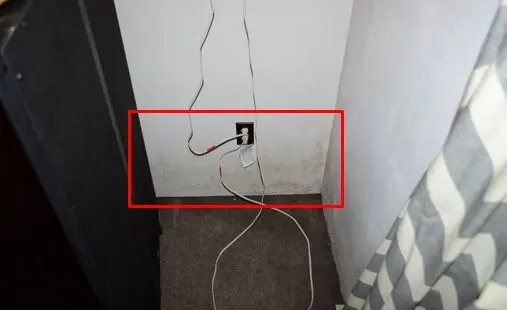
Mold Growth on Wall Behind Dresser – Corner Bedroom
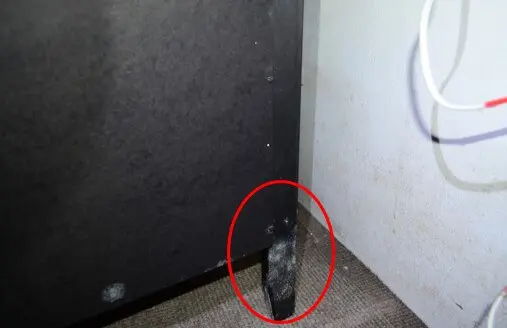
Mold Growth Noted on Backside of Dresser
OBSERVATIONS
- Mold on contents due to humidity. Mold growth on contents is a sign of extreme levels of indoor humidity and very likely indicates highly elevated levels of mold spores. This could cause adverse health reactions in sensitive individuals.
- Mold on contents due to isolated moisture.
RELATIVE HUMIDITY & TEMPERATURE READINGS:
CO2 READINGS:
VENTILATION:
Moisture and Gas Measurements:
LOCATION: Front Hall Bathroom
Observations:
- Evidence of a failed caulking is present around the bathroom window.
CEILING:
- Light water staining noted on bathroom ceiling. This occurs when the warm, moist air generated by shower usage interacts with the cool surface of the ceiling. Without adequate ventilation, this causes condensation.
SHOWER:
- Elevated moisture detected in shower surround.
- Several small areas of failed grout or caulking in shower. This can lead to water infiltration and mold growth/wood rot in the wallboard and framing behind the shower surround. However, because the potential mold growth would occur within the wall cavity, the issue has no effect on the indoor air quality.
Recommendations:
- See ventilation section above for recommendations to eliminate condensation.
- Re-caulk the shower surround around the window.
LOCATION: Middle Bedroom
Observations:
- Moderate condensation-based mold growth observed on the ceiling in this room.
- An air freshener is in use in this bedroom.
- The bedroom has:
- The carpet is in dirty condition.
- Quilt or duvet bedding.
Recommendations:
- Increase the cleaning schedule of this room to twice per week. Include damp-wipe dusting and thorough vacuuming of all surfaces.
LOCATION: Back Bedroom
Observations:
- Mold on contents due to humidity. Mold growth on contents is a sign of extreme levels of indoor humidity and very likely indicates highly elevated levels of mold spores. This could cause adverse health reactions in sensitive individuals.
- Moderate condensation-based mold was noted on the ceiling and walls in this room.
- The bedroom is furnished with carpeting in average condition.
Recommendations:
- Launder all appropriate items to remove settled and/or active mold spores. A standard detergent and Borax is typically effective.
LOCATION: Master Bedroom
Observations:
- Heavy condensation-based mold was noted on the ceiling in this room.
- The bedroom has:
- Upholstered furniture.
- The carpet is in average condition.
- Quilt or duvet bedding.
- Cloth drapes.
- The client reports they sometimes smoke in this room.
Recommendations:
- Add dust mite covers to the bed and pillows to seal in allergens so they are not inhaled while sleeping. These covers are easier to keep clean than a mattress or pillow.
- Increase the winter temperature in this room to at least 65ºF at all times.
- See ventilation section above for recommendations to eliminate condensation.
LOCATION: Living Room
Observations:
- The Living room has:
- Upholstered furniture.
- The carpet is in average condition.
- Cloth drapes.
LOCATION: Kitchen
Observations:
- Condensation-based water stains are present on the kitchen ceiling.
ALLERGEN PANEL
ANALYSIS OF YOUR ALLERGEN RESULTS:
- The levels of epithelial cells, cellulose fibers, and glass fibers are all higher than normal, but not at alarming elevations.
Recommendations:
- General housekeeping of dusting, sweeping, mopping, and vacuuming must be performed on an increased schedule.


